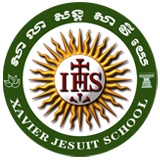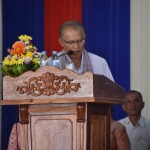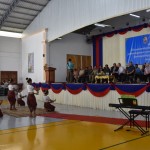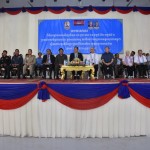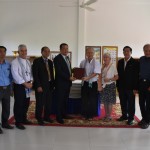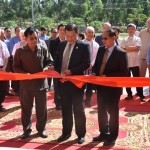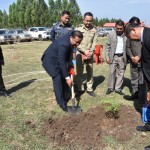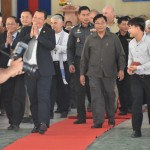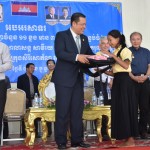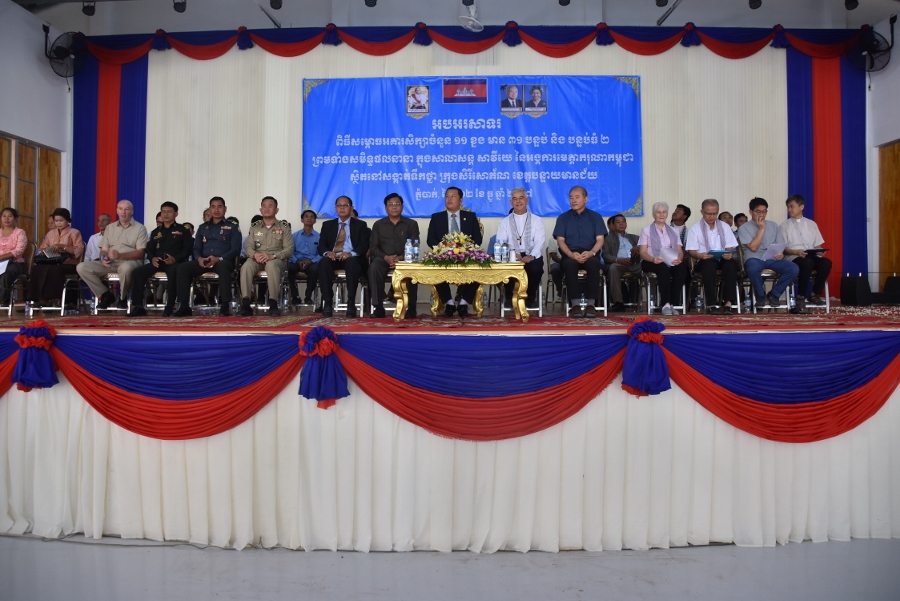
The excitement of the children was palpable. Dressed in their yellow and green school uniform, they lined the driveway, cheering and waving flags as the guests arrived. It was a big day for them. Their new school, Xavier Jesuit School, was to be inaugurated that day, December 2, the eve of the Feast of St Francis Xavier.
The inauguration ceremony was held in the newly built multipurpose hall, a stone’s throw from the Community Learning Centre, the single fully completed building that is currently being used for kindergarten classes and the Jesuit residence.
The large crowd that had come to celebrate this milestone for the Jesuit education project in Phnom Bak, Sisophon, filled the hall. Among the 800 people there were the Deputy Minister for Education Mr Hieng Sine, other government officials, Bishop Enrique Figaredo SJ, religious sisters, priests and brothers, donors, friends, staff, parents and students.
Fr Quyen Vu SJ, Director of Xavier Jesuit School, was clearly delighted that they had finally reached this day, calling it “a wonderful occasion that marks the great commitment of the Jesuit Mission in Cambodia to the youth of Cambodia”.
In his speech at the inauguration ceremony, he said in Khmer, “Everyone can attest that education is the key to the future, and the key to Cambodia’s future. We are very happy to be invited by the Ministry of Education to start our school project in Sisophon, and we are honoured to be able to offer a sound education to the many young children here.”
Fr Vu also gave an update on the student and staff numbers for 2017. There are 325 kindergarten and primary school students spread across two campuses – temporary classrooms in the Community Learning Centre and in the small school the Jesuits run in the adjacent poor village of Dey Lo. The secondary school has 77 students, and the entire project has 26 full-time staff and teachers. In 2018, the students from Dey Lo will join those already in Phnom Bak for Grade 3.
A short walk from the multipurpose hall, through some trees, the newly completed primary school buildings can be seen. There are five key words guiding the master plan – Happy Learning Community, Khmer Village, Safe, Silence and Nature. Already, one can picture the beautiful learning space envisioned, the silent natural space and sacred circle of trees at its heart, the school buildings opening out onto views of the river and countryside.
Two other components of the education project are still to be built – the secondary school which is divided into middle school (Grades 7-9) and high school (Grades 10-12), and the central administration building plus the school library. Construction on the first eight classrooms of the high school began on December 4.
Fr Vu paid tribute to those who started the education project – Fr Ashley Evans SJ, Ms Sonai, Mr Touen, Scholastic Paul Nguyen SJ. He also thanked the many people who made the school possible – the Ministry of Education, the provincial office of Education, the district office of Education, the commune chief, village chief, local schools: Phnom Bak, Teuk Thla, Keap, Banoy, O’Ambel, and their wonderful benefactors and friends, several of whom had flown to Cambodia for the occasion.
“I am very happy to see how Xavier Jesuit School has progressed over the years. I am amazed to see the wonderful changes and the beautiful campus it is now. This is an ideal environment for the students to study and for the staff and teachers to work in,” said Fr Lorenzo Yom SJ, Director of Joy of Sharing, a Jesuit organisation in Korea that has been a significant source of funding for the education project.
Together with other generous donors in Korea, Japan, Singapore, Germany and many other places, Joy of Sharing funded this initial part of the education project (Community Learning Centre and the primary school).
The school’s motto is “Dare to dream of a brighter future” and the Jesuits in Cambodia have taken this to heart as they continue to raise funds to build the rest of the education project that will set children in Cambodia on the road to a brighter future.
This article is taken from the JCAP website uploaded on 12th of December 2017.
